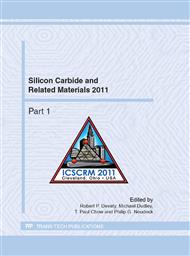p.445
p.449
p.453
p.457
p.461
p.465
p.469
p.473
p.477
Detection of Mobile Ions in the Presence of Charge Trapping in SiC MOS Devices
Abstract:
Since power devices such as DMOSFETs will operate at high temperature where mobile ion effects are enhanced, identifying their presence is a key reliability issue for power electronics applications. We have detected the presence of mobile ion contamination in some SiC MOS device sample sets and correlated those results with observed high temperature bias instability. The differing behaviors of these devices to bias stressing as a function of temperature suggests that in some cases mobile ion drift may be counteracting the typical charge trapping effect. Triangular voltage sweep (TVS) data indicates the presence of roughly 1-4x1012 cm-2 mobile ions in samples where the bias instability significantly decreased with higher temperature, while samples with a nearly flat or positive-trending response showed overall lower ion contaminations of roughly 6-9x1011 cm-2. These results, although preliminary, support the theory that mobile ion contamination is the cause of negative bias instability at elevated temperatures in SiC MOS.
Info:
Periodical:
Pages:
461-464
Citation:
Online since:
May 2012
Authors:
Keywords:
Price:
Сopyright:
© 2012 Trans Tech Publications Ltd. All Rights Reserved
Share:
Citation:


